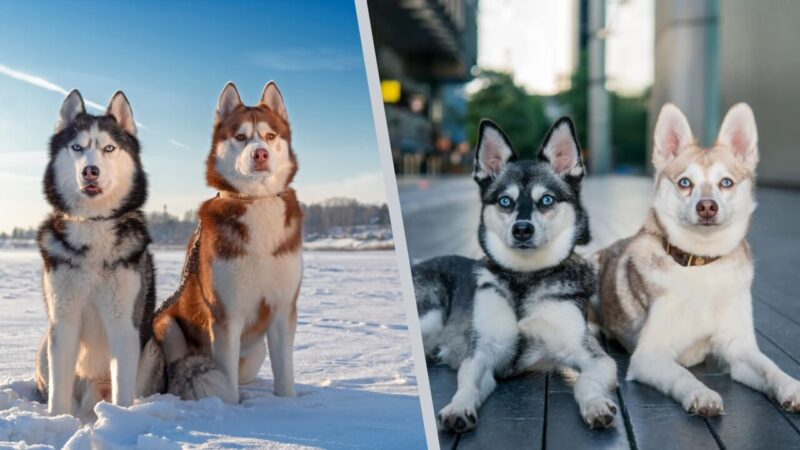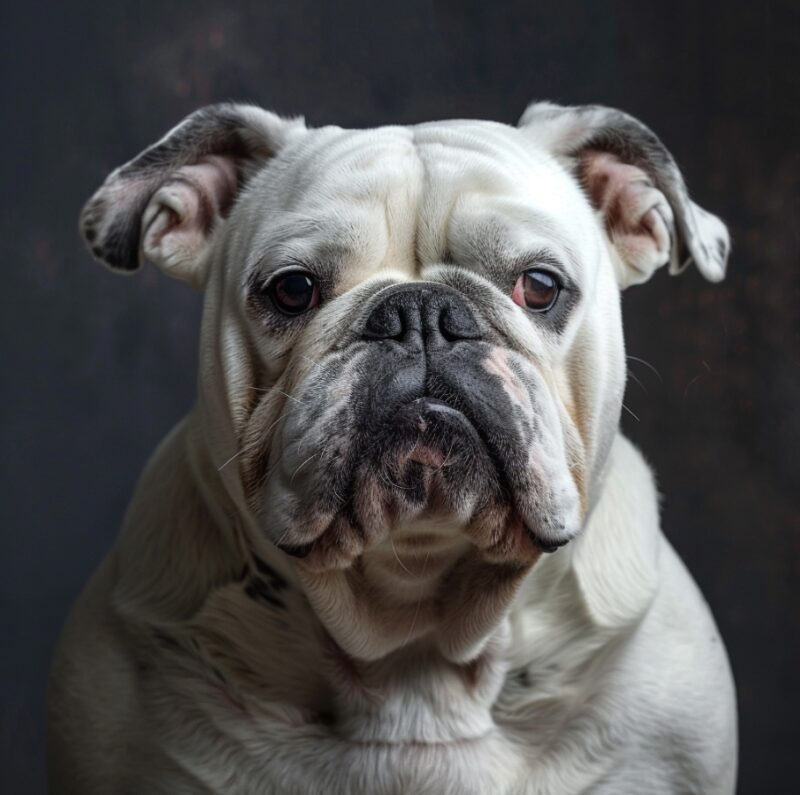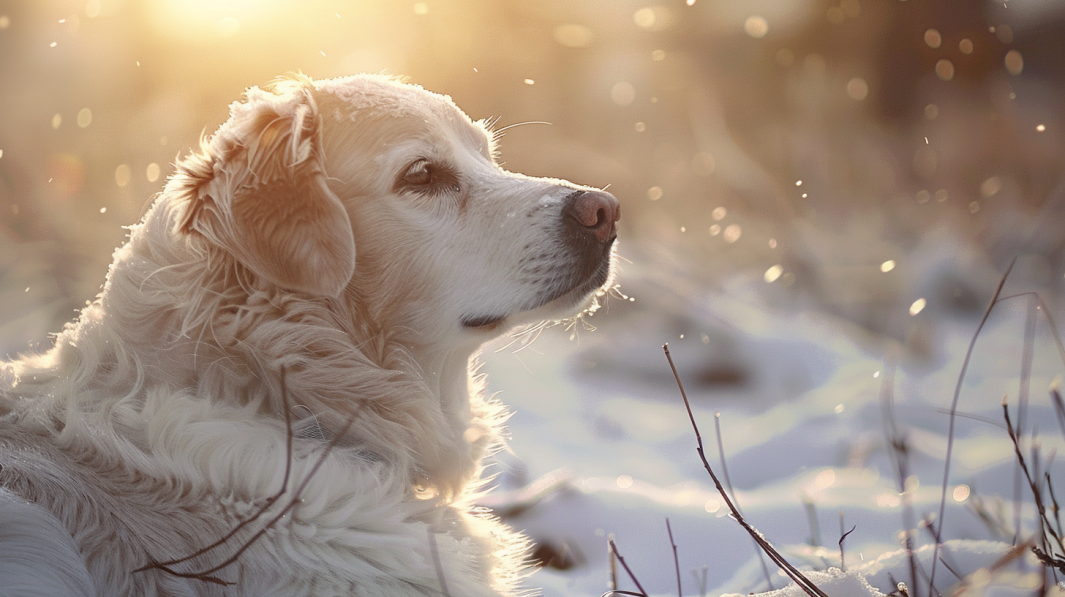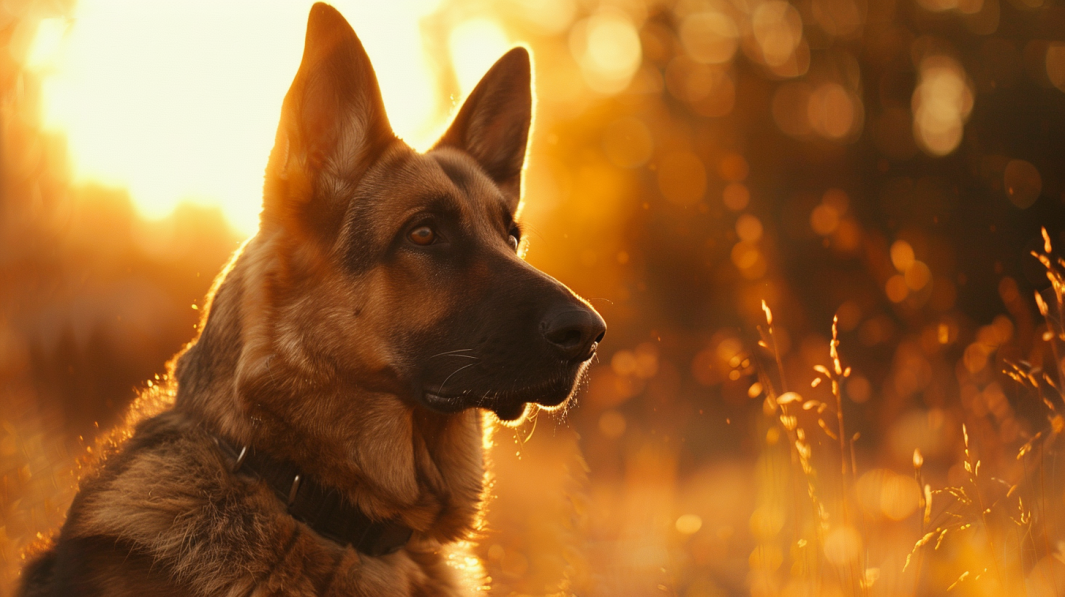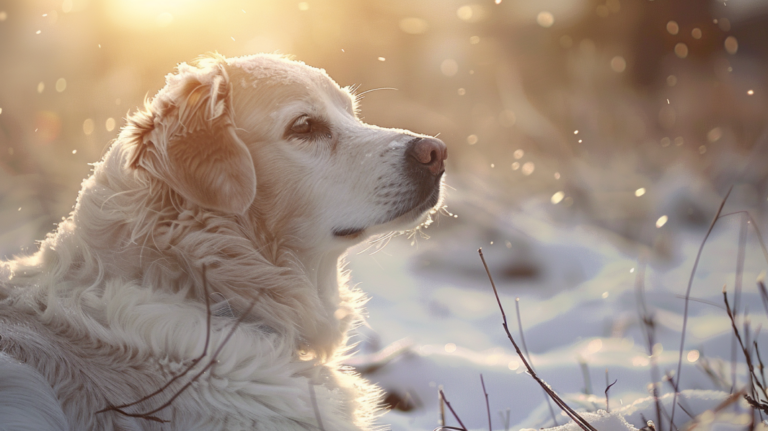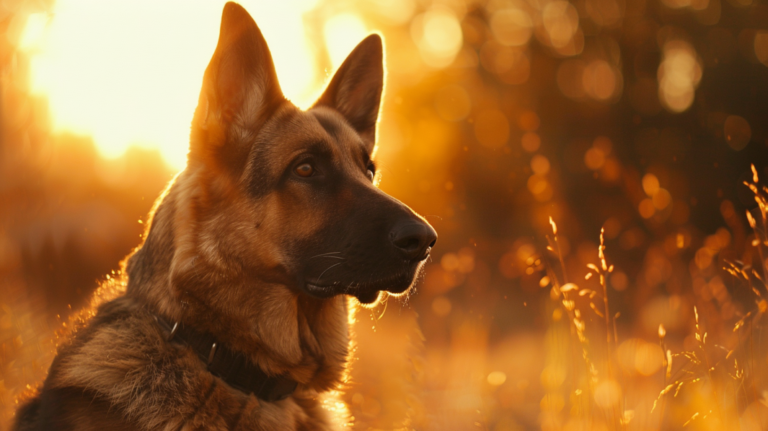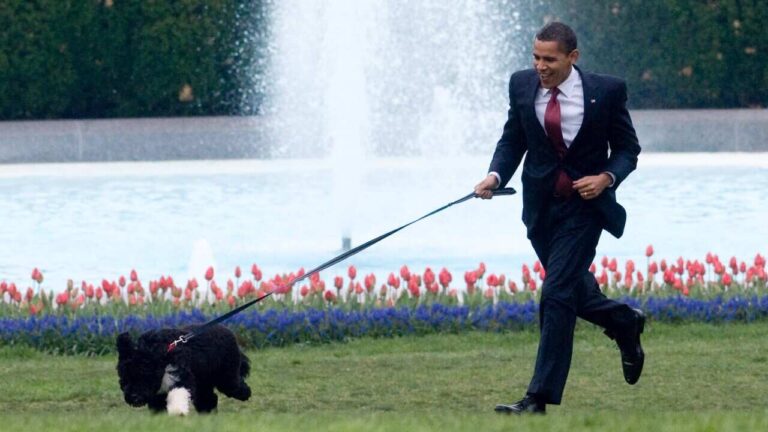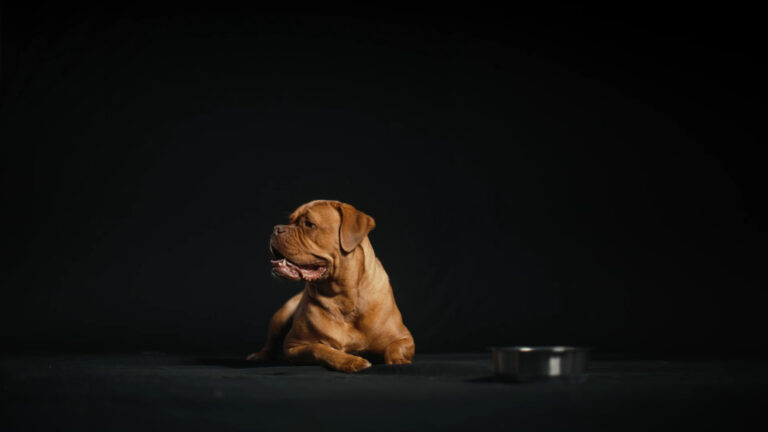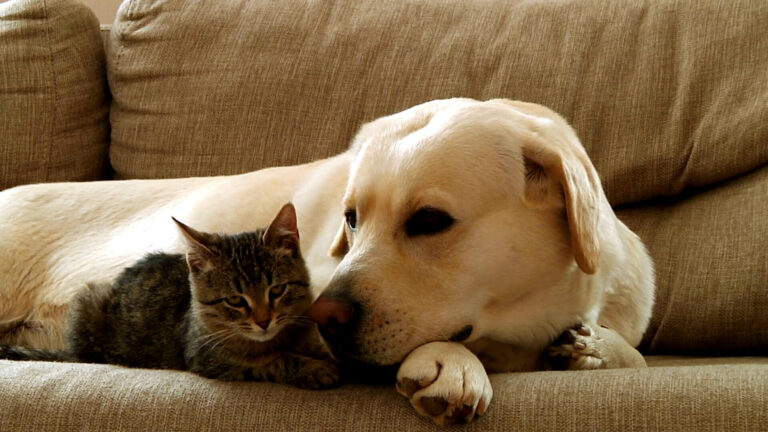There are so many cool dog breeds out there. Two that grab lots of attention are Alaskan Klee Kai and Siberian Huskies. At first look they seem alike – both are cute and fluffy! But when you learn more, you see what makes them their own special breed.
The Klee Kai is smaller than a Husky. They have shorter coats too. Huskies have those big beautiful eyes and are built for running long miles in the snow. Klee Kais are spunky and playful. Huskies have more energy to burn! Both love the cold but Klee Kais do better in warmer places. Their personalities match their looks – different but equally awesome! No matter which one you pick, you’ll get a loyal companion always up for fun.
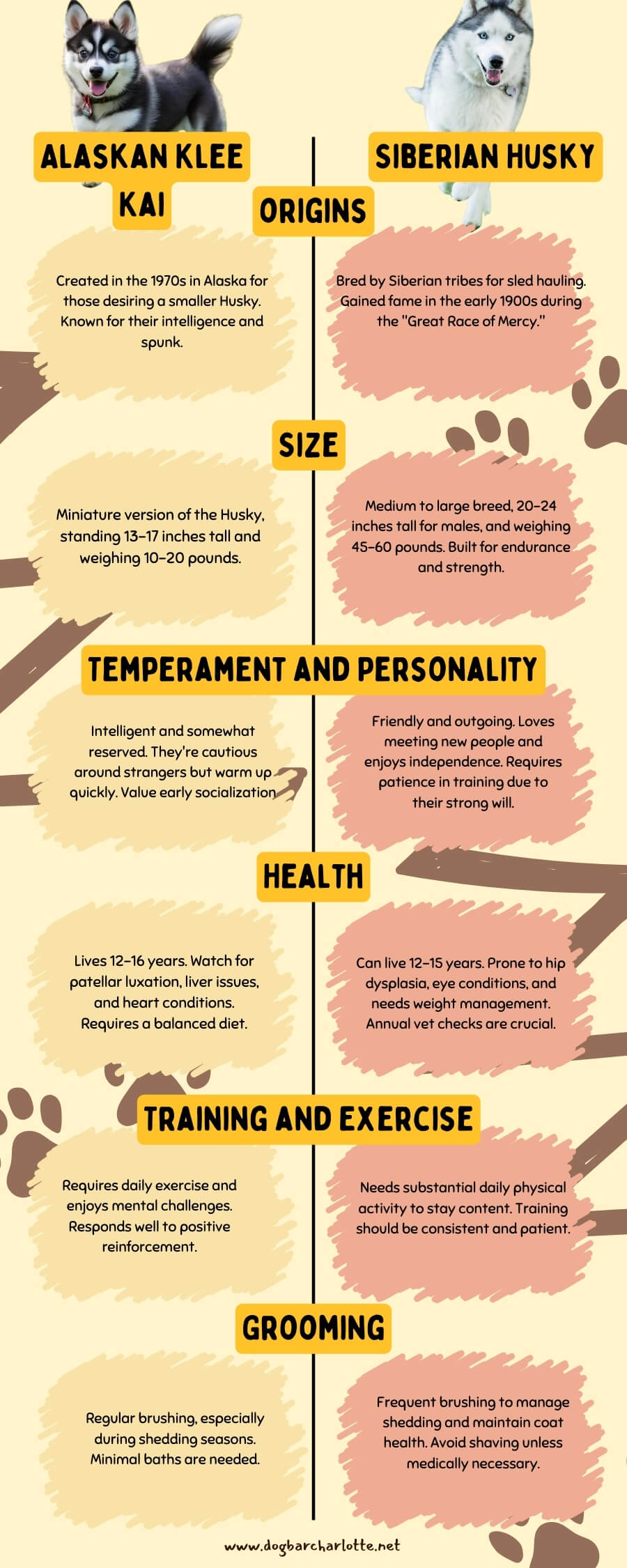
1. Size and Build
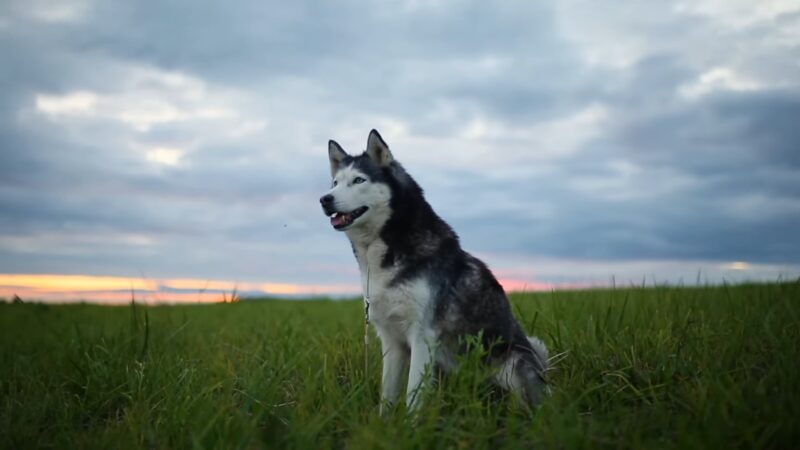
These breeds may look alike at first, but when you look closer you see some big size differences.
Alaskan Klee Kai
The Alaskan Klee Kai is often described as a miniature version of the Husky.
- Height: Typically between 13 to 17 inches at the shoulder.
- Weight: Ranges from 10 to 20 pounds depending on the size variant (toy, miniature, or standard).
While their smaller size makes them perfect for apartments, it’s essential to remember that they are still packed with energy.
Siberian Husky
On the other hand, Siberian Huskies are a medium to large-sized breed. Their physique showcases:
- Height: Generally, between 20 to 24 inches for males and 18 to 22 inches for females.
- Weight: A healthy male weighs between 45 to 60 pounds, while females range from 35 to 50 pounds.
Their strong, fit bodies show where they came from.
2. Temperament and Personality

Even though these breeds are both smart and energetic, their attitudes can surprise you.
Alaskan Klee Kai
Klee Kais aren’t always the life of the party like Huskies. They can be shy around new people at first. But don’t let that fool you – these pups have brains for days! Their smarts can also mean a bit of attitude too.
Klee Kais likes to analyze things before saying hi. Give them time, soon they’ll want tummy rubs from anyone.With intelligence comes independence. If they don’t wanna do something, they’ll let you know!
Given their nature, early socialization is crucial to help them become well-rounded dogs.
Siberian Husky
Huskies will say hi to anyone with a wagging butt! These dogs just want to be pals with everyone. They love human friends but also like exploring alone. Training can be tough since they think for themselves.
And do they ever have energy? Without lots of playtime every day, these pups will go crazy bored. A good run or romp in the yard is a must to tire them out. Huskies were made to work hard and play hard too!
Because of their friendly ways, Huskies aren’t the best guard dogs. A robber would get licked not bit!
3. Coat and Coloration
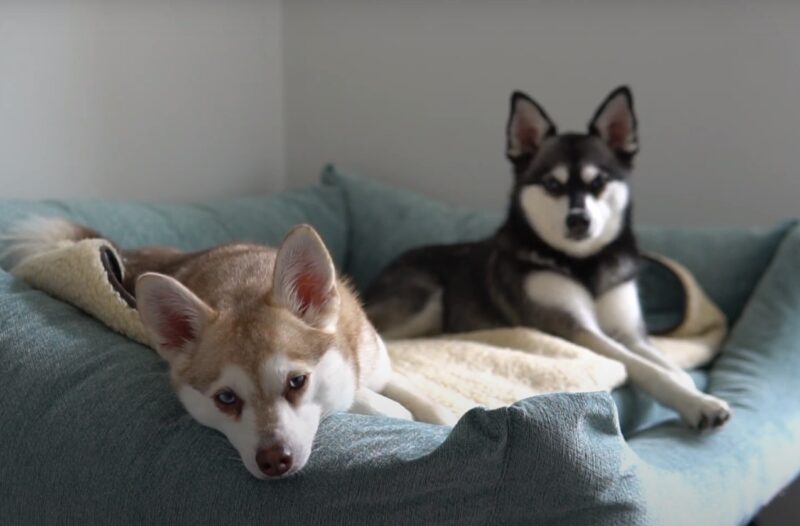
Both breeds boast a double coat, but the colors and patterns are not the same.
Alaskan Klee Kai
The Alaskan Klee Kai’s coat can be described as:
- Variety: Three types – short, long, and full.
- Colors: Usually black and white, gray and white, or red and white.
Their unique “facial mask” pattern, combined with their striking colors, makes them especially eye-catching.
Siberian Husky
Siberian Huskies showcase:
- Texture: A dense undercoat with a longer topcoat that can withstand harsh climates.
- Colors: A broader range, including black, gray, agouti, and red, combined with white.
Have you seen those gorgeous eyes? Blue like the sky or ocean just takes your breath away. Some even have one blue and one brown eye – how cool is that? Called heterochromia, it makes them extra unique.
4. Health and Lifespan
While these breeds tend to be sturdy dogs, there’s still things owners should watch for.
Alaskan Klee Kai
Klee Kais are lucky pooches that can live 12 to even 16 years if cared for right! A few things to watch out for include the kneecap slipping out of place (called patellar luxation). Liver birth defects and heart issues can also pop up.
A healthy, balanced diet is also key for Klee Kais. High-quality kibble with the right vitamins and minerals keeps them in top shape. Snacks should be limited to treats made just for pups. Too many people’s foods can lead to weight gain or tummy troubles.
Siberian Husky
You can expect your Husky friend to be by your side for 12 to even 15 fun years if cared for properly. A few health things to watch closely are hip problems, cloudy eyes, and eye diseases that cause blindness. Keeping weight down helps joints and regular eye checkups spot issues early.
When you take your pup to the vet each year, doctors can also check for murmurs and do preventative testing. This finds anything worrying before it gets serious. Quality dog food, plenty of exercise, and lots of love keep Huskies in top shape long term. Brushing their thick coats also prevents painful mats and keeps skin healthy.
5. Origin and History
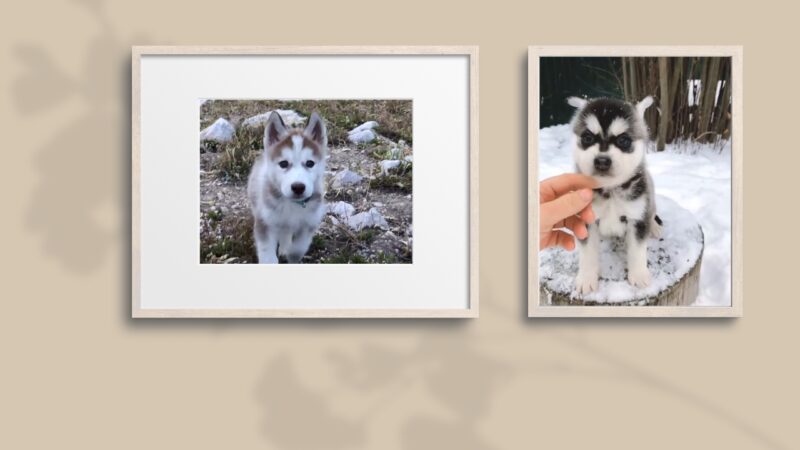
While both pups come from snowy places, their paths to here are different tales.
Alaskan Klee Kai
In the 1970s, a lady named Linda in Alaska wanted a tiny Husky friend. So she bred her smallest Husky to even littler ones. After years of this, Linda had created the perfect pint-sized pal – the Klee Kai! She called them this which means “small dog” in Eskimo.
Because Klee Kais were made so recently, they’re not seen as often as other types. But word is spreading about their big personalities in a small fluffy package!
Siberian Husky
Tribes in Siberia first bred them over thousands of years ago. Huskies hauled heavy sleds for goods through deep snow. They helped the Chukchi people survive the extreme frozen land. Later more people met these tough dogs. But Americans really took a shine to Huskies in the early 1900s.
That’s when the Huskies made an epic trip to save lives. They raced medicine through blizzards to a sick town. Everyone called it the “Great Race of Mercy” – what a cool name! Ever since Huskies have explored icy places all over the globe. We have them to thank for finding cool stuff in frozen lands too.
6. Training and Exercise Needs

These pups were made to run, run, run all day long. Without enough play time, they’ll get stir-crazy fast.
Alaskan Klee Kai
Praise and treat when they’re good works much better than scolding when they’re not. Even so, their independent ways mean going at their pace. These pups catch on quickly once they want to learn. Games where they figure things out are very fun for them.
Though small, Klee Kais still needs exercise like bigger dogs. Long walks per day are a must, plus play in the yard. Agility courses in the park are great for their minds and energy. You could also try flyball or frisbee to really tire them out!
Siberian Husky
Be kind but also make sure they listen when you call or command. Reward good behavior so they want to repeat it. If they get stubborn, take a break before trying again so no one gets frustrated. Praise and treats work much better than scolding.
These dogs were born to run and pull sleds for miles. Without enough exercise, they’ll go crazy! Long walks every day are a must. Jogging, hiking or playing fetch in the yard also helps burn off all that energy.
7. Grooming Requirements
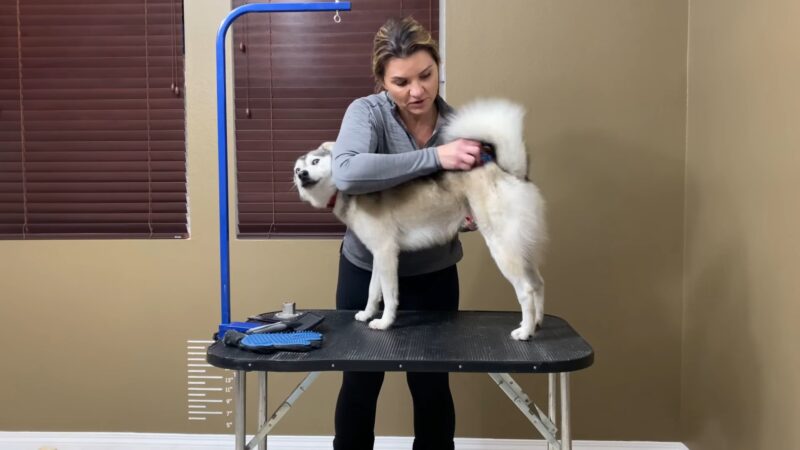
With all that fluff, these pups need lots of grooming.
Alaskan Klee Kai
Brushing is key for Klee Kais since they blow their coats twice a year. During those times, fur will fly like crazy! A few times a week a slicker brush or comb grabs loose hairs before they get tangled. This prevents matted fur messes.
Since they don’t get as dirty, bath time is only needed occasionally. Wiping paws each day after walks is enough. Check those tiny ears often for wax buildup. Clean them gently with a cotton ball and ear cleaner. Trim nails regularly too so they stay short. Klee Kais may be small but they sure shed a lot!
Siberian Husky
A few times a week with a slicker brush or comb prevents mats in all that fur. It also lifts loose hair before it covers the house! Never shave them unless the vet says to. Their double coat protects the skin and keeps them at the right temp.
Always check your ears for wax buildup. Clean teeth a few times a week too with pet toothpaste. Trim nails every 1-2 months. Huskies shed a ton in spring and fall, so be ready! Regular brushing makes it way more manageable.
Final Words
Deciding which is best takes knowing their pluses and minuses. Klee Kais are pint-sized but pack a ton of spunk. Their tiny size fits homes where big dogs can’t. Yet don’t let their little frames fool you – these pups have giant personalities!
Huskies are majestic beauties. With their stunning coats, they look like models. But their energy needs lots of exercise time. Their size also means more food and grooming costs. Both are clever and want to be with their people always. Training must start young to bond and have well-behaved pals.

